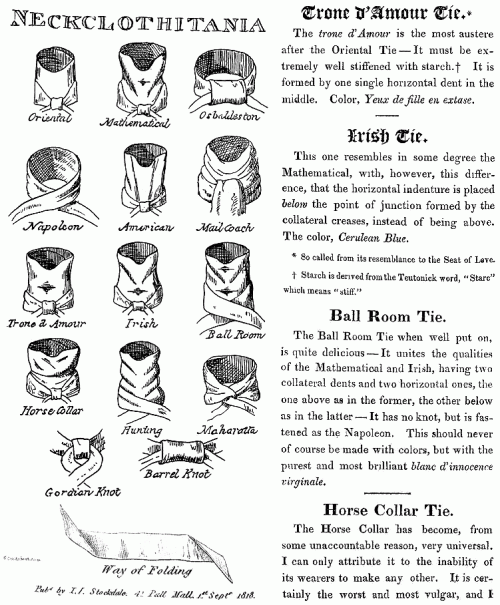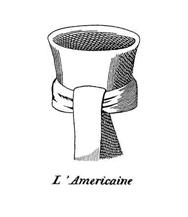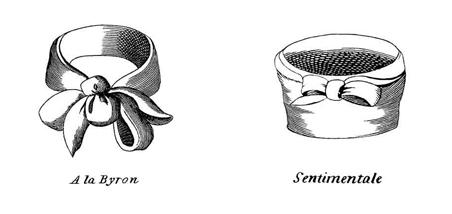
The Neckclothitania was published in September 1818 as a satirical document that poked fun at the most popular cravat styles of the time. Some of the cravats shown in the pamphlet were so elaborate and ridiculous that they clashed with Brummell’s idea that “style was essential in the quality of one’s linen rather than the extremity of it”.
By 1818 colors were becoming fashionable, whereas in Brummell’s day only the purest white (blanc d’innoncence virginale) was acceptable.* The cloth for cravats was made of starched linen, though as some of the cravats styles evolved, a more relaxed, unstarched cloth was required for a looser, draped effect. By the 1830′s silk was used for neckcloths, as it still is used for today. In 1818, only a year after Brummell left for France, other cravat colors were introduced.

The fronticepiece of Mr. Le Blanc’s book shows an engraving of the author wearing an elaborate white cravat, the acme of full dress London fashion in 1828. In that year there were 32 types of cravats. Those made of black silk or satin were for general wear, while white cravats with spots or squares were considered half dress. The plain white cravat was admitted at balls or soirees where colored cravats were prohibited.

Source: Jane Austen´s World blog.


jordan shoes
ReplyDeletegiannis antetokounmpo shoes
curry shoes
fear of god
hermes birkin
fear of god outlet
supreme new york
supreme new york
golden goose usa
pg 1
ch8g368fc
ReplyDeletegolden goose outlet
golden goose outlet
golden goose outlet
golden goose outlet
golden goose outlet
golden goose outlet
golden goose outlet
supreme outlet
golden goose outlet
golden goose outlet